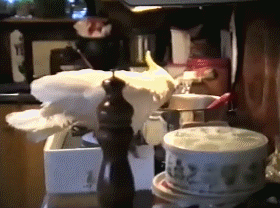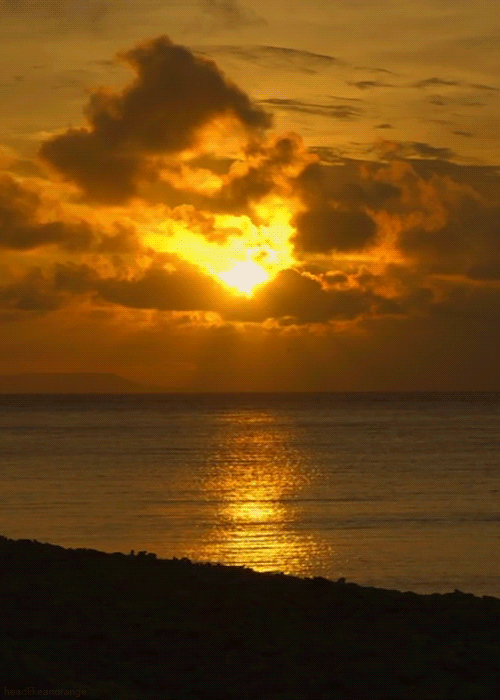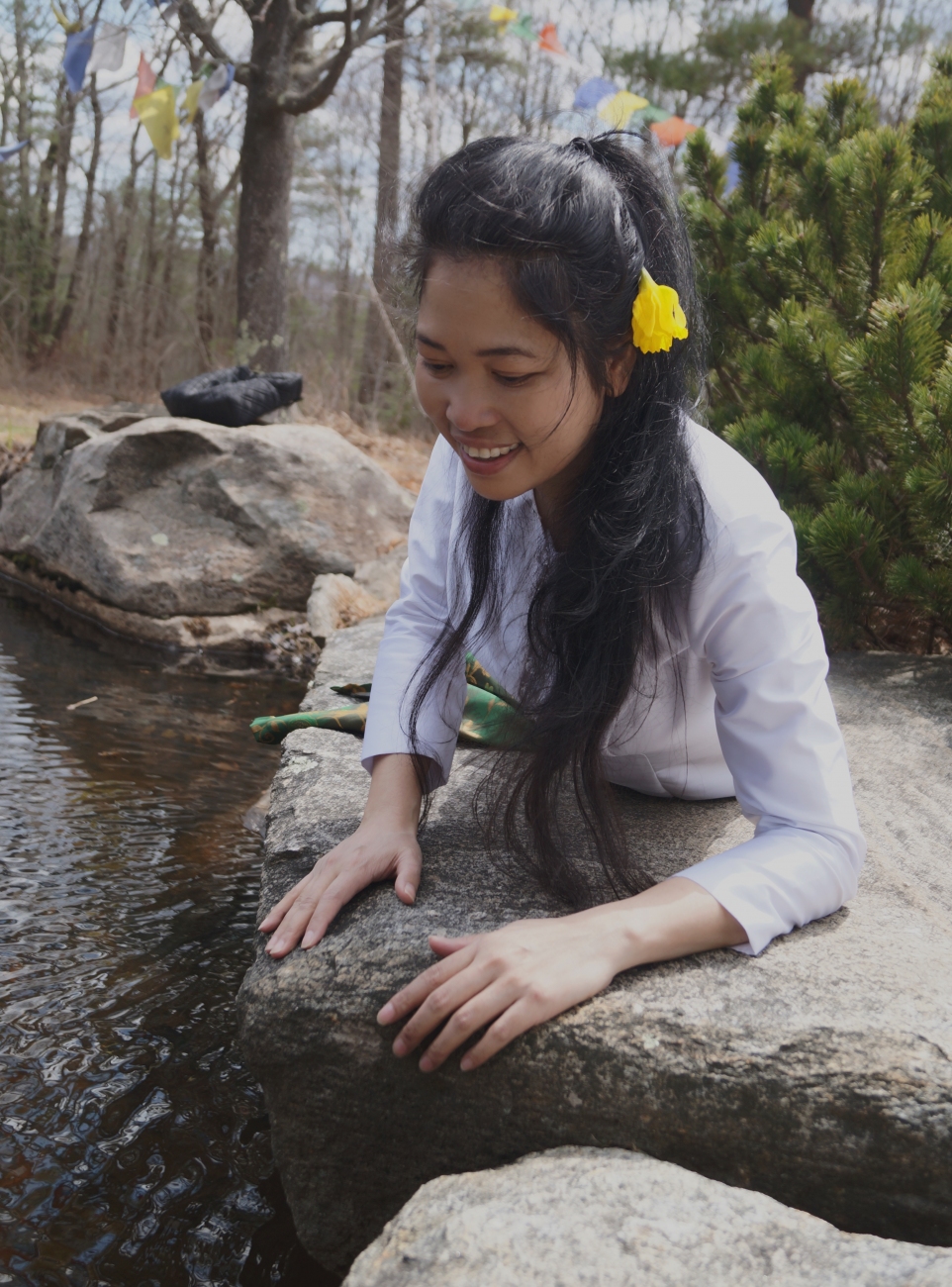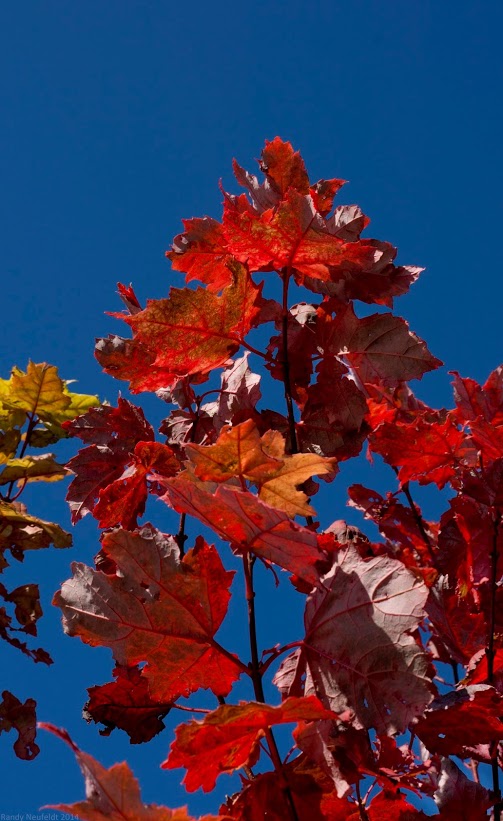-
Comment April 26, 2015
-
If you are a little silent…
Comment April 26, 2015Listen to your being. It is continuously giving you hints; it is a still, small voice. It does not shout at you, that is true. And if you are a little silent you will start feeling your way. Be the person you are. Never try to be another, and you will become mature. Maturity is accepting the responsibility of being oneself, whatsoever the cost. Risking all to be oneself, that’s what maturity is all about. ~Osho
-
Parrot and dog love noodles
Comment April 26, 2015 -
Happiness and Sadness…
Comment April 26, 2015Sadness gives depth. Happiness gives height. Sadness gives roots. Happiness gives branches. Happiness is like a tree going into the sky, and sadness is like the roots going down into the womb of the earth. Both are needed, and the higher a tree goes, the deeper it goes, simultaneously. The bigger the tree, the bigger will be its roots. In fact, it is always in proportion. That’s its balance. ~Osho
-
Don’t be afraid…
Comment April 26, 2015 -
The winds long to play with your hair
1 April 26, 2015Forget not that the earth delights to feel your bare feet and the winds long to play with your hair. ~ Kahlil Gibran
After awhile you learn the subtle difference between holding a hand and chaining a soul, and you learn that love doesn’t mean possession and company doesn’t mean security. And you begin to learn that presents aren’t promises and you begin to accept your defeats with your head up and your eyes ahead with the grace of an adult, not the grief of a child. And you learn to build your roads today, because tomorrow’s ground is too uncertain for plans, and futures have a way of falling down in mid-flight. After awhile you learn that even sunshine burns if you get too much so you plant your own garden and decorate your own soul, instead of waiting for someone to bring you flowers. And you learn that you really can endure, that you really are strong, and you really do have worth. ~Ritu Ghatourey
-
Birthplace of Lord Buddha — Lumbini, Nepal
Comment April 26, 2015 Siddhartha Gautama, the Lord Buddha, was born in 623 B.C. in the famous gardens of Lumbini, which soon became a place of pilgrimage. Among the pilgrims was the Indian emperor Ashoka, who erected one of his commemorative pillars there. The site is now being developed as a Buddhist pilgrimage centre, where the archaeological remains associated with the birth of the Lord Buddha form a central feature.
Siddhartha Gautama, the Lord Buddha, was born in 623 B.C. in the famous gardens of Lumbini, which soon became a place of pilgrimage. Among the pilgrims was the Indian emperor Ashoka, who erected one of his commemorative pillars there. The site is now being developed as a Buddhist pilgrimage centre, where the archaeological remains associated with the birth of the Lord Buddha form a central feature.As the birthplace of the Lord Buddha – the apostle of peace and the light of Asia was born in 623 BC – the sacred area of Lumbini is one of the holiest places of one of the world’s great religions, and its remains contain important evidence about the nature of Buddhist pilgrimage centres from a very early period. Lumbini, in the South-Western Terai of Nepal, evokes a kind of holy sentiment to the millions of Buddhists all over the world, like Jerusalem to Christians and Mecca to Muslims.
Lumbini is the place where the Buddha, known as the Tathagata, was born. It is the place which should be visited and seen by a person of devotion and which should cause awareness and apprehension of the nature of impermanence. The site and its surrounding area is endowed with a rich natural setting of domesticable fauna and favourable agricultural environ. Historically, the region is an exquisite treasure-trove of ancient ruins and antiquities, dating back to the pre-Christian era. The site, described as a beautiful garden in the Buddha’s time, still retains its legendary charm and beauty.
The birthplace of the Gautama Buddha, Lumbini, is one of the four holy places of Buddhism. It is said in the Parinibbana Sutta that Buddha himself identified four places of future pilgrimage: the sites of his birth, Enlightenment, First Discourse, and death. All these events happened outside in nature under trees. There is no particular significance in this, other than it perhaps explains why Buddhists have always respected the environment and natural law.
 Lumbini is situated at the foothills of the Himalayas in modern Nepal. In the Buddha’s time, Lumbini was a beautiful garden full of green and shady sal trees (Shorea robusta ). The garden and its tranquil environs were owned by both the Shakyas and the clans. King Suddhodana, father of Gautama Buddha, was of the Shakya dynasty and belonged to the Kshatriya (warrior caste). Maya Devi, his mother, gave birth to the child on her way to her parent’s home in Devadaha while resting in Lumbini under a sal tree in the month of May, 642 BC. The beauty of Lumbini is described in Pali and Sanskrit literature. Maya Devi, it is said, was spellbound to see the natural grandeur of Lumbini. While she was standing, she felt labour pains and catching hold of a drooping branch of a sal tree, she gave birth to a baby, the future Buddha.
Lumbini is situated at the foothills of the Himalayas in modern Nepal. In the Buddha’s time, Lumbini was a beautiful garden full of green and shady sal trees (Shorea robusta ). The garden and its tranquil environs were owned by both the Shakyas and the clans. King Suddhodana, father of Gautama Buddha, was of the Shakya dynasty and belonged to the Kshatriya (warrior caste). Maya Devi, his mother, gave birth to the child on her way to her parent’s home in Devadaha while resting in Lumbini under a sal tree in the month of May, 642 BC. The beauty of Lumbini is described in Pali and Sanskrit literature. Maya Devi, it is said, was spellbound to see the natural grandeur of Lumbini. While she was standing, she felt labour pains and catching hold of a drooping branch of a sal tree, she gave birth to a baby, the future Buddha.In 249 BC, when the Indian Emperor Ashoka visited Lumbini, it was a flourishing village. Ashoka constructed four stupas and a stone pillar with a figure of a horse on top. The stone pillar bears an inscription, which in translation runs as follows: ‘King Piyadasi (Ashoka), beloved of devas, in the 20th year of the coronation, himself made a royal visit, Buddha Sakyamuni having been born here; a stone railing was built and a stone pillar erected to the Bhagavan having been born here, Lumbini village was taxed reduced and entitled to the eight part (only)’.
Lumbini remained neglected for centuries. In 1895, Feuhrer, a famous German archaeologist, discovered the great pillar while wandering about the foothills of the Churia range. Further exploration and excavation of the surrounding area revealed the existence of a brick temple and sandstone sculpture within the temple itself, which depicts the scenes of the Buddha’s birth.
It is pointed out by scholars that the temple of Maya Devi was constructed over the foundations of more than one earlier temple or stupa, and that this temple was probably built on an Ashokan stupa itself. To the south of the Maya Devi temple there is the famous sacred bathing pool known as Puskarni. It is believed that Maya Devi took a bath in this pool before the delivery. By the side of the Ashoka pillar a river which flows south-east and is locally called the Ol. In 1996, an archaeological dig unearthed a ‘flawless stone’ placed there by Ashoka in 249 BC to mark the precise location of the Buddha’s birth more than 2,600 years ago. if authenticated, the find will put Lumbini even more prominently on the map for millions of religious pilgrims.
Source: UNESCO/CLT/WHC
-
When one has become a forgiving person
Comment April 26, 2015 -
Travel light
Comment April 26, 2015 -
Kittie chasing dog
Comment April 25, 2015










